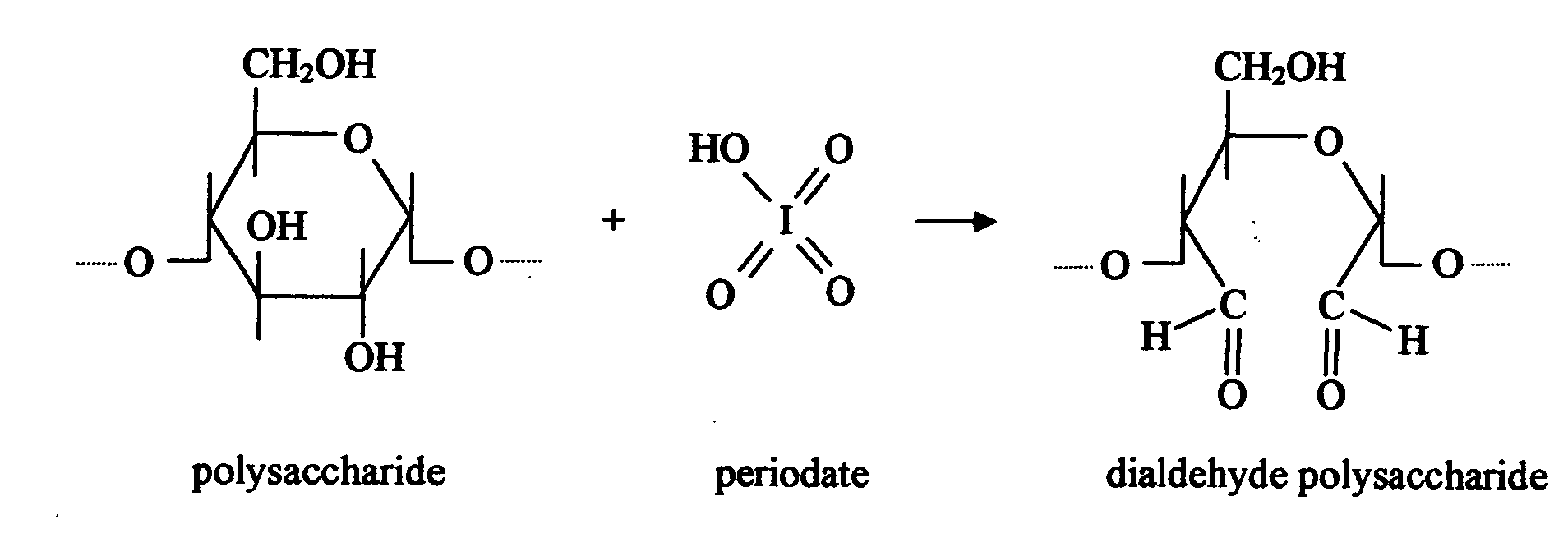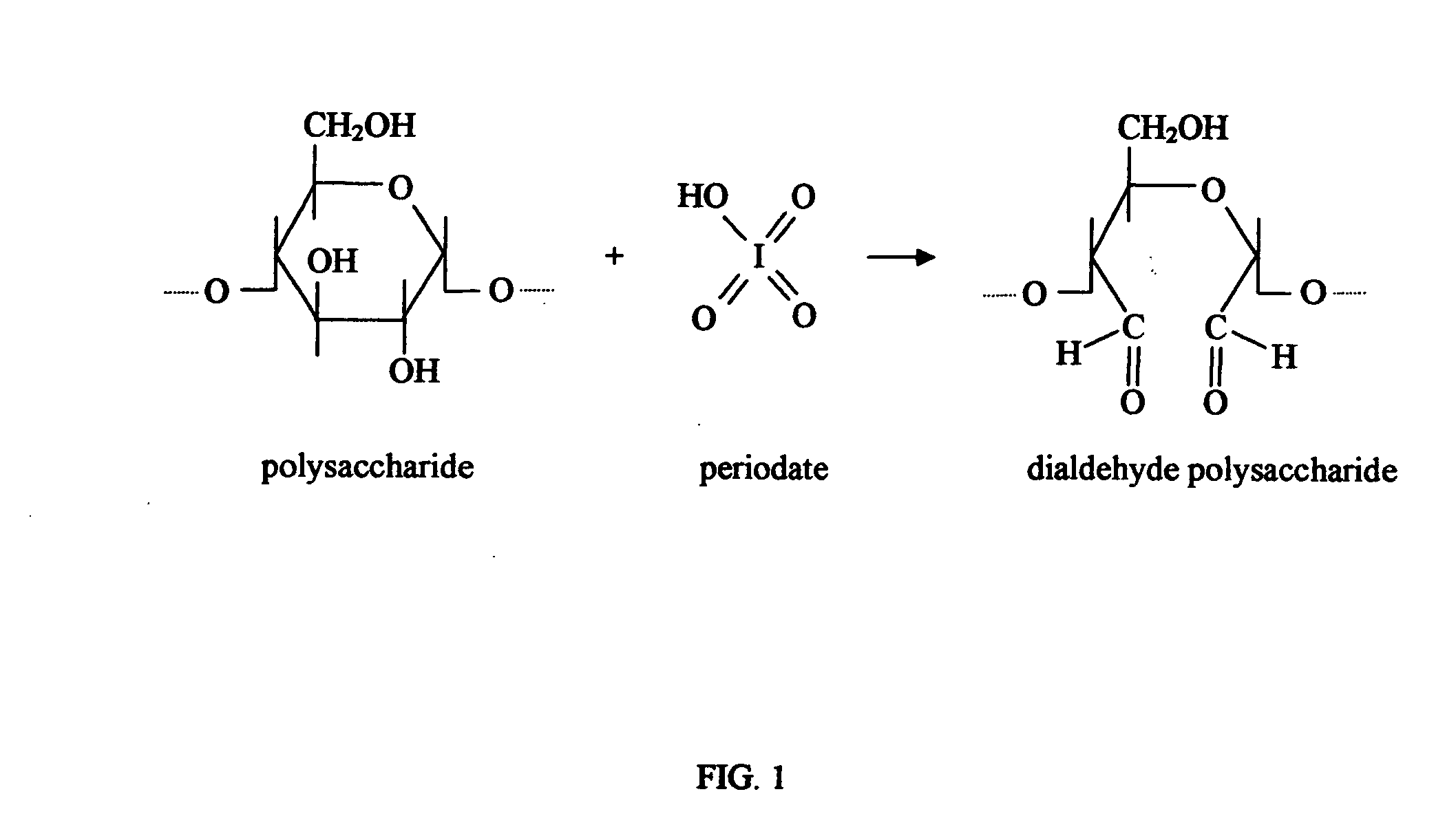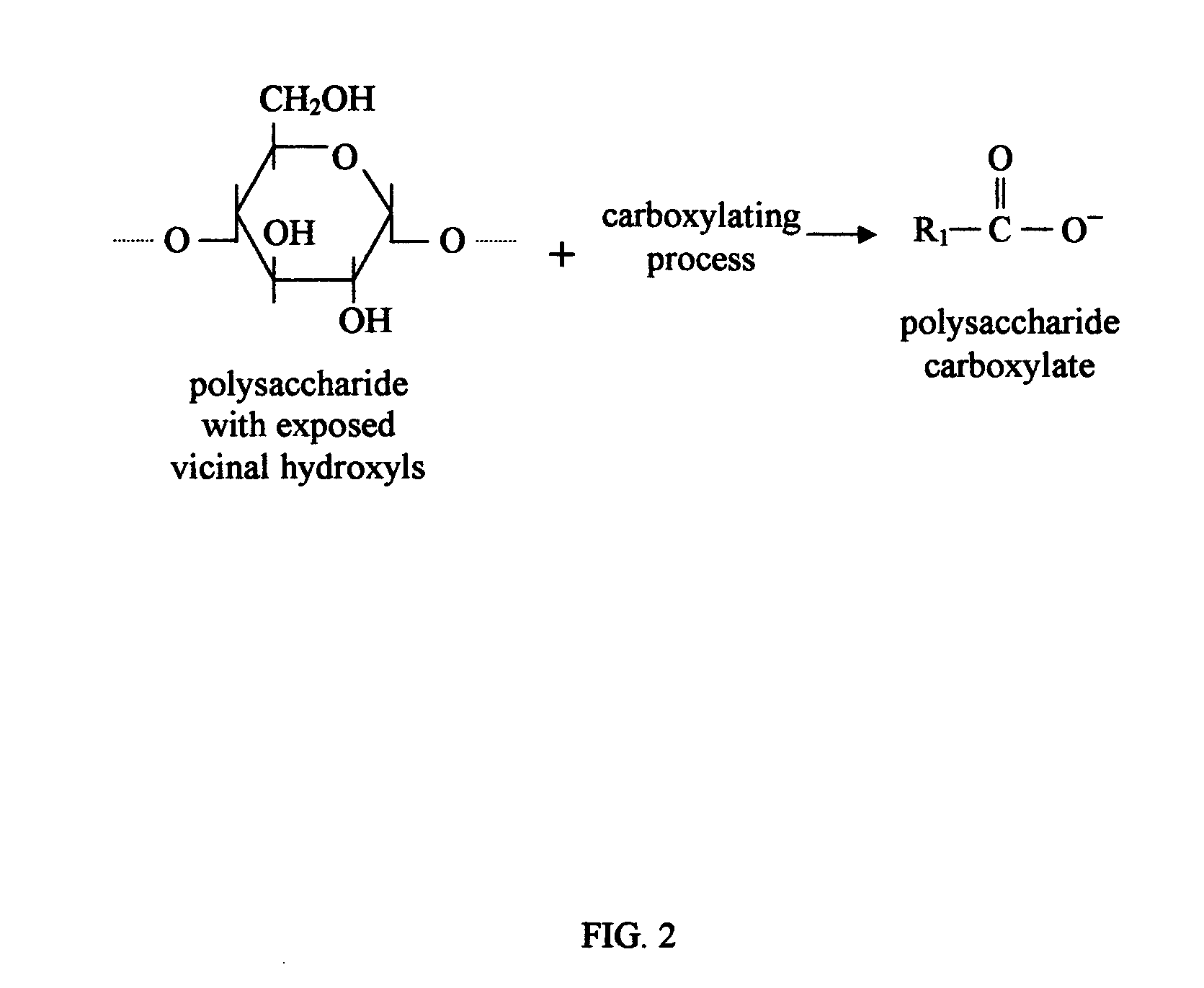Biodegradable plastics
a technology of biodegradable plastics and plastics, applied in the direction of pharmaceutical non-active ingredients, medical preparations, etc., can solve the problems of large amount of waste, high cost of reducing agents, and method almost completely abandoned, and achieve excellent absorbing properties
- Summary
- Abstract
- Description
- Claims
- Application Information
AI Technical Summary
Benefits of technology
Problems solved by technology
Method used
Image
Examples
example 1
[0067]Distillers' dry grain with solubles (Dakota Gold DDG obtained from Dakota Commodities Incorporated, Scotland, S. Dak., that contained 88.38% dry matter with 30% crude protein, 12% crude fat and 5.38% ash was pulverized in a kitchen blender prior to use.
[0068]The DDG powder, 5 gm. was suspended in either 0.1 or 1.0 M aqueous NaOH solution (50 ml) and agitated for 24 hours at room temperature in a closed flask. Subsequently, deionized water (125) ml and 0.1 mole of one of the following acyl anhydrides was admixed to the suspension: glutaric, maleic, phthalic, and succinic anhydride. The reaction mixture was subsequently agitated for 24 hours in a sealed flask, followed by centrifugation for 30 minutes at 6000 rpm. Supernatants were decanted and the resulting centrifuge cakes were dried in air at 50° C.
[0069]DDG powder, 5 gm. was suspended in deionized water, 175 ml., and solid NaOH, (4.5 gms.) was subsequently added. The reaction mixture was agitated for 6 hours at room temperat...
example 2
[0077]Corncob powder designated as 820R Lite-R-cob was purchased from the Anderson's Corncob Products, Maumee, Ohio. The product had a specific gravity of 0.8 to 1.2 and a moisture content of 10%, a particle size distribution of 3% of 3 mesh, 5% of 5 mesh, 10% of 8 mesh, 60% of 10 mesh, 15% of 20 mesh, and 5% of 30 mesh.
[0078]Acylation was carried out essentially as set forth in Example 1 using 5 grams of corncob in 50 ml of 1.0 M aqueous NaOH solution.
[0079]Carboxymethylation was carried out by using 5 grams of corncob powder and suspending it in deionized water (175 ml) with solid NaOH (4.5 grams). The reaction mixture was agitated for 6 hours at room temperature in a closed flask, followed by the addition of sodium chloroacetate (either 0.1 or 0.2 mole). The reaction mixture was subsequently agitated for 12 hours in a sealed flask, followed by centrifugation for 30 minutes at 6000 rpm. Supernatants were decanted and the resulting centrifuge cakes were dried in air at 50° C.
[0080]...
example 3
[0086]The sawdust used herein was provided by Putt, Incorporated, Freeland, Mich. and was hardwood chips known as Hardwood Tender Turf. The chips were pulverized in a kitchen blender and size fractionated using a series of sieve screens. The fine fraction that passed through a 30 mesh screen was used in the derivatization.
[0087]In the acylation procedure, five grams of the pulverized and sized fines were suspended in 1.0 M aqueous NaOH solution (50 ml) and agitated for 24 hours and handled as in Example 1.
[0088]The carboxymethylation was handled as in example 1.
[0089]Formation of reaction products of derivatized hardwood and isolated soy protein was carried out by dissolving 5 grams of isolated soy protein in deionized water (100 ml) and the derivatized hardwood powder (5 grams) was admixed therein. The reaction mixture was agitated for 24 hours in a closed container, followed by centrifugation for 30 minutes at 6000 rpm. Supernatants were decanted and the resulting centrifuge cakes...
PUM
| Property | Measurement | Unit |
|---|---|---|
| Temperature | aaaaa | aaaaa |
| Plasticity | aaaaa | aaaaa |
Abstract
Description
Claims
Application Information
 Login to View More
Login to View More - R&D
- Intellectual Property
- Life Sciences
- Materials
- Tech Scout
- Unparalleled Data Quality
- Higher Quality Content
- 60% Fewer Hallucinations
Browse by: Latest US Patents, China's latest patents, Technical Efficacy Thesaurus, Application Domain, Technology Topic, Popular Technical Reports.
© 2025 PatSnap. All rights reserved.Legal|Privacy policy|Modern Slavery Act Transparency Statement|Sitemap|About US| Contact US: help@patsnap.com



